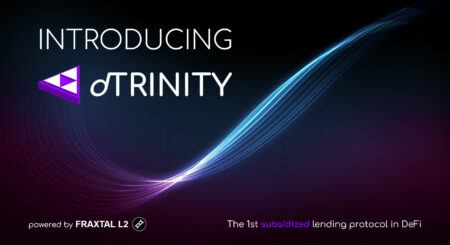After recording all-time highs in December 2017 and early 2018, cryptocurrency prices have fallen sharply – with many coins turning into dead (or abandoned) projects. However, there are still some cryptocurrency platforms that have enough resources to move forward with their ongoing development and seem to be building products that will have legitimate use cases.
In this article, we look at two different blockchain-based platforms that are developing solutions which will likely be in high demand.
Using Near Field Communication (NFC) To Track Products On Supply Chain
VeChain (VET) is a blockchain-powered supply chain management platform that allows users to keep track of logistics and inventory. Specifically, VeChain’s proprietary network monitors the manufacturing process of products from the production stage to when they’ve been delivered to the consumers. Being able to accurately track a product’s life cycle, which includes all transactions associated with them, helps users determine whether or not a product is genuine (or authentic).
For example, if the product being tracked is a genuine Rolex watch, then by scanning the watch’s product or QR code, VeChain’s software can check all transactions associated with it. Notably, the supply chain management platform also supports Near Field Communication (NFC) technology, which is a set of widely-used communication protocols that allow electronic devices to share data with each other.
For each product, VeChain’s proprietary software generates a unique VeChain Identity (VID) by using a SHA-256 hash function. The VID is then recorded into a QR code or NFC tag associated with a product, in order to track the supply chain activities.
VeChain Partners With PricewaterhouseCoopers (PwC)
There are many notable partnerships that VeChain has established over the years including one with PricewaterhouseCoopers (PwC), which is the world’s second-largest professional services firm. Moreover, several key board members at the VeChain Foundation have experience working at PwC. VeChain is also reportedly working with Microsoft and the developers of Hyperledger on various projects.
Another project to keep an eye on during 2019 is Lisk (LSK). First introduced in 2016, the blockchain-enabled digital currency platform has been created through a joint effort by its founders Oliver Beddows, a Berlin-based technology enthusiast, and Max Kordek, the co-founder of blockchain for business development platform Lightcurve.
What makes Lisk stand out from many other cryptocurrency projects is that the company backing its development appears to have enough resources to continue working on the platform’s ongoing development. This, despite the huge losses companies have experienced during the extended digital currency bear market.
Lisk: Allowing Users To Truly Own Their Data
As explained on its official website, Lisk aims to allow individuals and organization to truly own their personal data. One of the main disadvantages of living in a world of rapid globalization and advancements in communications technology, according to Lisk’s development team, is that we no longer have privacy.
As most social media users would know, giant centralized social media websites including Facebook and Twitter have been accused of selling user data and/or allowing their platforms to be used for manipulating the results of political campaigns. The founders of Lisk aim to resolve these issues by providing a secure and decentralized network where users can build and deploy their own scalable blockchain-based applications.
Using JavaScript To Program Sidechains
While many other platforms such as Tron (TRX) and EOS also aim to give users more control of their personal information, it’s possible that Lisk’s fundamental design principles might appeal to certain members of the growing crypto community. For instance, developers can use JavaScript, which is one of the most commonly used web-based programming languages, to build dApps on the Lisk network. The Lisk platform also uses sidechains for developing dApps, meaning that each application deployed on its network will have its own separate blockchain, which allows for more efficient processing (according to Lisk’s developers).
As CryptoGlobe reported recently, nearly 1,000 cryptocurrency projects have died during this year’s bear market. Although many of these were scams, there were also many seemingly legitimate projects or initiatives that were forced to shut down due to lack of funding in a crypto market that has now lost over $700 billion (since reaching an all-time high market cap of over $800 billion in December 2017).
Having adequate financial resources to continue working on development is imperative and ultimately determines whether a cryptocurrency will be successful. In another article, we take a look at other projects that also appear to be well-funded and are developing solutions that may have potential use cases in real-world scenarios.









